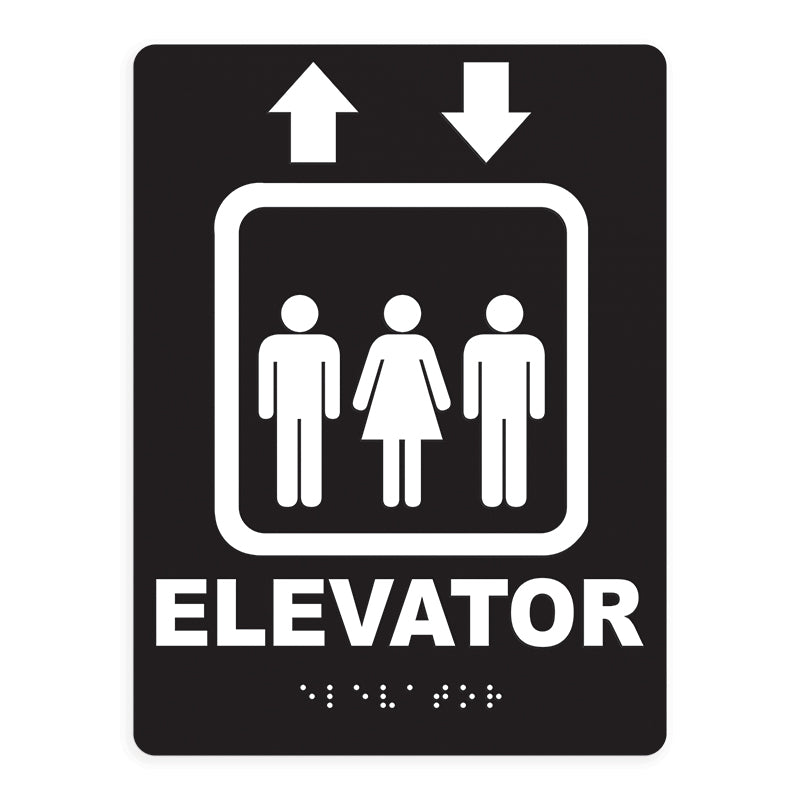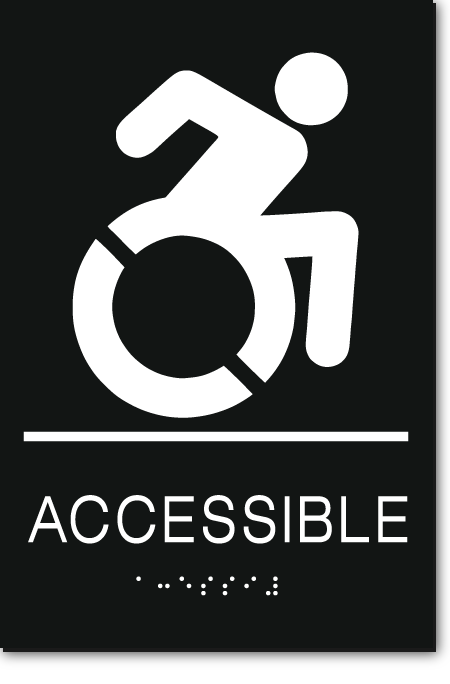Comprehending the Regulations Behind ADA Signs
Comprehending the Regulations Behind ADA Signs
Blog Article
ADA Signage: Ensuring Availability and Conformity in Public Spaces
ADA signs plays an indispensable function in guaranteeing accessibility and conformity within public areas, considerably contributing to a comprehensive environment for people with specials needs. As we check out the nuances of ADA signs, from tactile attributes to create details, it's critical to think about just how these elements coalesce to promote the rights of all users.
Relevance of ADA Signage
In modern culture, the value of ADA signs prolongs beyond mere compliance with lawful mandates to personify a commitment to inclusivity and access for all individuals. These indicators are necessary in creating settings where people with handicaps can navigate public rooms with the same convenience and independence as those without disabilities. By supplying clear and standard information, ADA signage makes certain that everybody can access facilities, services, and information without barriers.
The significance of ADA signs depends on its capability to improve the high quality of life for people with handicaps by promoting equivalent access. It eliminates the barriers that could otherwise hinder their capacity to participate completely in area life. These signs offer as noticeable indications of an organization's commitment to variety and equal rights, showing wider social values that promote the civil liberties and self-respect of all individuals.
Furthermore, ADA signs plays a crucial duty in public safety and security. By leading individuals to leaves, bathrooms, and various other essential centers, it makes sure that all individuals, despite physical capacity, can evacuate safely during emergencies. In recap, ADA signage is not just a regulatory demand but a powerful tool for cultivating a inclusive and equitable society.
Key Elements of Compliance

Placement is crucial; indicators must be set up in places that are obtainable and quickly noticeable. Commonly, signs ought to be installed between 48 and 60 inches from the ground to ensure availability for both standing and wheelchair individuals. Tactile components, such as Braille, are crucial for individuals with visual impairments, providing vital information in a non-visual layout.
High-contrast colors in between the message and history are necessary to enhance readability for people with reduced vision. The ADA mandates certain comparison proportions to guarantee clarity. Furthermore, character dimension is a crucial factor to consider, with minimal elevation requirements determined by the checking out range to guarantee readability from various angles.
Style Factors To Consider for Accessibility
Creating available signs calls for a careful approach to guarantee it satisfies the needs of all customers, specifically those with impairments. This entails considering various layout components that improve readability and functionality. Secret factors consist of the choice of typeface, color comparison, and responsive functions. Typefaces ought to be sans-serif, with clear and straightforward letterforms, to help with easy reading. The size of the message is equally essential, with ADA standards advising a minimal elevation based upon checking out distance to ensure clarity.
Contrasting shades between text and background are essential for visibility, particularly for people with aesthetic impairments. Furthermore, responsive components, such as Braille and increased characters, are essential for individuals who are blind or have low vision.
In addition, the positioning of signs plays a considerable duty in access. Signs should be installed in areas that are unhampered and easily obtainable. Ensuring that signage is installed at suitable heights and angles allows all users, consisting of those making use of wheelchairs, to engage with them effectively.
Typical Errors to Stay Clear Of

One more common mistake is the incorrect placement of signs. ADA guidelines specify exact elevation and area requirements to make sure that signs are conveniently noticeable and obtainable by all individuals, consisting of those utilizing wheelchairs. Neglecting these guidelines not only obstructs accessibility but also takes the chance of non-compliance with lawful standards.
Furthermore, not enough contrast in between text and background is a more info here frequent oversight. Appropriate contrast is crucial for readability, particularly for individuals with low vision. Designers occasionally pick shades that are visually enticing but do look here not have the essential contrast, providing the message hard to discern.
Lastly, some designers stop working to integrate tactile components, such as Braille, which are vital for people that are blind. Leaving out these functions not only causes non-compliance with ADA regulations yet likewise restricts gain access to for a section of the populace that counts on tactile info.
Future Trends in Signs
Developments in modern technology and boosting awareness of inclusivity are forming the future fads in signs layout. Digital signage, for instance, is advancing to consist of interactive attributes and real-time updates, which can be essential in giving vibrant details in public areas.
Another emerging fad is the utilization of increased truth (AR) to boost individual experience. AR-enabled signs can overlay digital info onto the physical environment, giving aesthetically impaired people with auditory or haptic comments. ADA Signs. This technology not only enhances accessibility yet also develops an engaging experience for all users
Sustainability is also a substantial variable affecting signs patterns. Green products and energy-efficient illumination remedies are being focused on to line up home with international environmental objectives. Developments in materials science are leading to the development of more weather-resistant and sturdy indications.
Final Thought
ADA signs plays an important duty in assuring accessibility and conformity within public areas by incorporating responsive elements, high-contrast shades, and tactical positioning. The adherence to ADA requirements not only assists in safe navigating for individuals with handicaps however also represents an organization's commitment to variety and inclusivity. By staying clear of typical blunders and embracing future trends, public rooms can proceed to advance these worths, making certain that the civil liberties and self-respect of all people are respected and maintained.
ADA signs plays a crucial function in assuring access and conformity within public spaces, dramatically contributing to an inclusive atmosphere for people with handicaps. As we check out the nuances of ADA signage, from tactile functions to create intricacies, it's vital to take into consideration just how these aspects coalesce to copyright the rights of all individuals.In modern-day society, the significance of ADA signage prolongs beyond plain conformity with lawful requireds to personify a commitment to inclusivity and accessibility for all individuals. By providing clear and standardized info, ADA signage makes certain that every person can access facilities, services, and info without barriers.
ADA signage plays an essential role in guaranteeing access and conformity within public spaces by integrating responsive elements, high-contrast colors, and critical placement. (ADA Signs)
Report this page